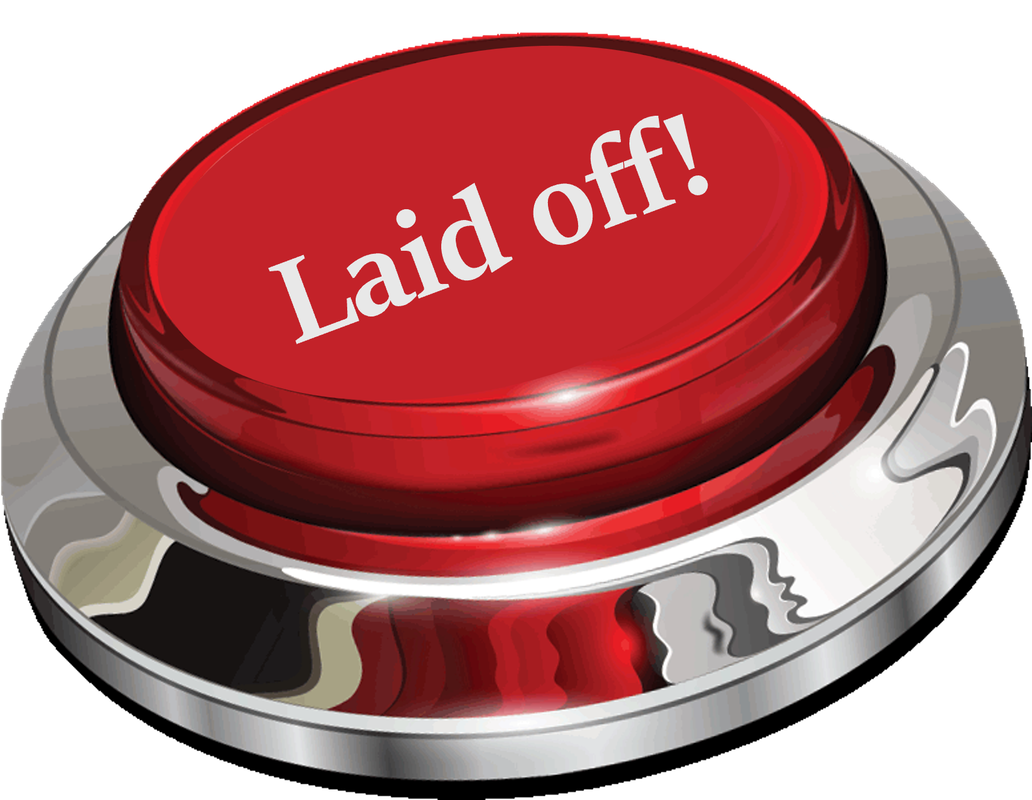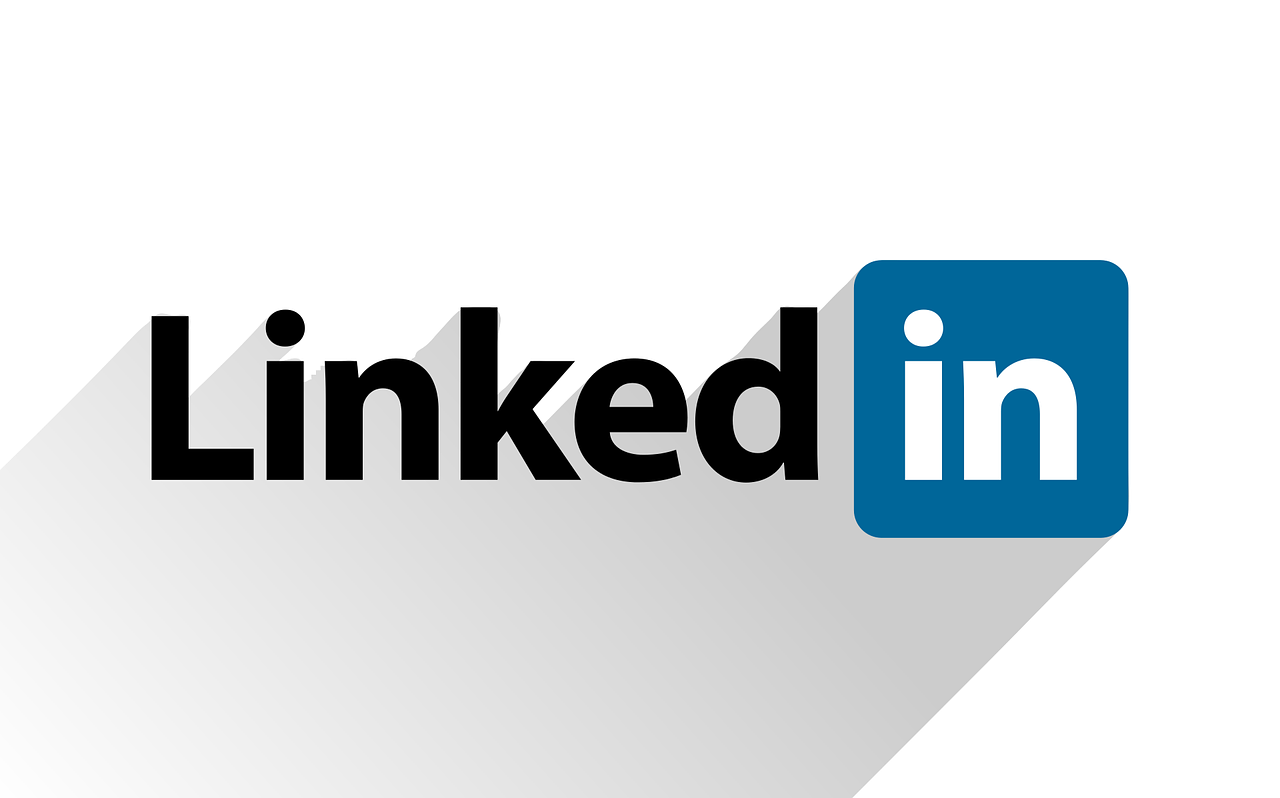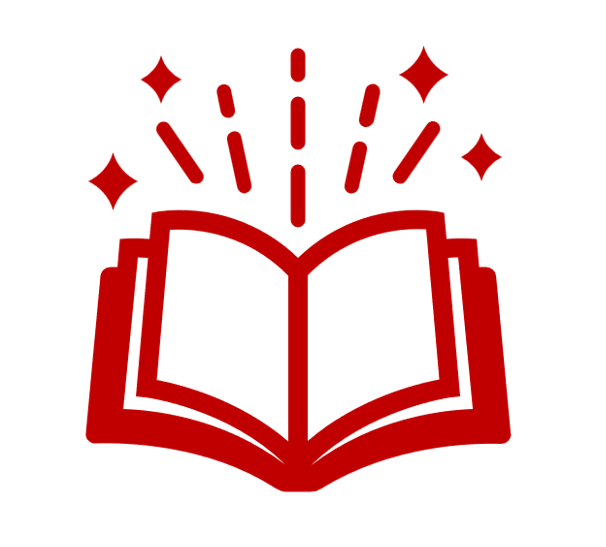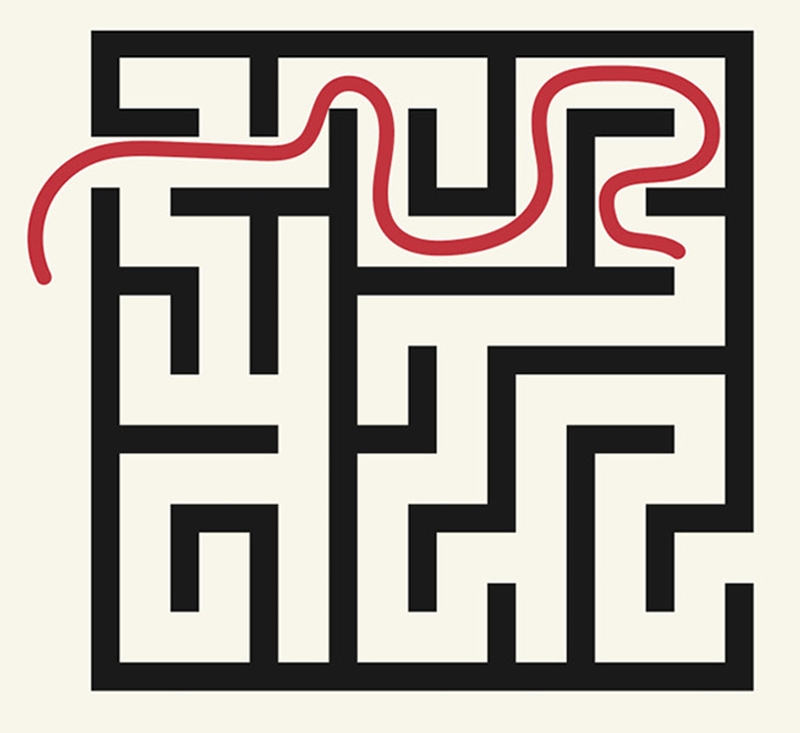|
By Brenda L. Peterson, The Layoff Lady Preparing for a Positive ScenarioContingency planning is not the most upbeat topic. It's all about making a backup plan just in case something terrible happens. Instead of predicting doom and gloom, let's update our planning approach and focus on opportunity readiness. Opportunity readiness is about thinking about who you truly are, what you want your work life to be, and living into that future. When you step into that role of being the CEO of you, your focus shifts to what you want to be and positioning yourself for that success. If you've done that, you'll be able to identify what an amazing opportunity is for you--and be ready to go for it! An Opportunity Presents ItselfEven when you like your current company, position, or coworkers, sometimes you might hear about an opportunity that could be the right next step for you in your career. Here's what that might look like:
In each of these cases, you weren't actively looking for a new role. However, once you heard about the opening, you realized it might be just the thing you were looking for and found out more! Opportunity ReadinessOpportunity readiness is a part of career resilience that may not always occur to us. When people are not actively job searching, sometimes they neglect to make new networking connections, keep in touch with people they know, update their LinkedIn, or update their resume. However, these are EXACTLY the things to prioritize. Knowing what you want, staying in touch with your network, and always evolving your skills will position you to move quickly when the time comes. Your ResumeYour resume is the main document potential employers want to see. Even if someone contacts you about an opening, you’ll need an up-to-date resume to be considered. This document needs to summarize who you are as a candidate as well as your most relevant skills, work history, education, professional affiliations, and accomplishments. This is where you can shine! Keeping your resume current is a crucial first step. Including details on your current role, adding newly earned credentials, and highlighting recently used skills can help you shine. Getting a resume out the door within a couple of hours can improve your chances of being seriously considered. It's also a great way to help the person who connected you with the opportunity feel even more sure that you're a great fit! Your LinkedIn ProfileLinkedIn is your professional billboard to the working world. It is an all-purpose marketing tool where people can view information beyond your resume, see which other people and companies you may have in common, and read the content you share in your posts. When people are gainfully employed, they often stop fine-tuning their profiles and interacting with their professional connections. Taking time to polish your LinkedIn profile and posting content on your areas of expertise is a way to remind people of you and your professional value. In fact, continuing to be active on LinkedIn may very well be why someone contacts you about what might be the perfect opportunity for you. A great way to remind people of who you are and what you're good at is by posting relevant content. Sharing a picture of you leading a training session, or an article about a great new way to optimize a project will help people associate you even further with your skillset. Your Work SamplesYour work samples, often called your portfolio, are a way to demonstrate the skills you mention in your resume or LinkedIn profile. These work samples should give the hiring team an idea of your process and finished product examples. Creating a portfolio is not something that most people can quickly throw together. There are several steps, including identifying your overall portfolio goals, developing or selecting work samples, positioning each work sample to showcase your professional capabilities, and determining the technological aspects of how you might set up your portfolio. Since some employers may require a portfolio before seriously considering you for a role, pulling this together and updating it as needed can help make you success-ready. As you complete interesting projects,remember to add those to your portfolio It' s nice to have your portfolio grow and change as you evolve your skills. What Do You Think?What do you think would prepare you to move quickly on an opportunity if one presented itself? Include your thoughts in the comments. Learn More
0 Comments
By Brenda L. Peterson, The Layoff Lady The Challenge: Describing What You DoWhether you're searching for a new role or thinking about your professional development, not having the right words to describe your skillset can hinder your progress. Identifying your career keywords will help you create effective messaging for your LinkedIn profile, resume, conversations with colleagues, and other written communications like email and social media posts. Where To Start: LinkedIn and KeywordsHere is my recommendation for how to begin gathering keywords that align with your chosen profession:
Let me take you through an example. Search for Your Target Job TitleI searched LinkedIn's Jobs section for Business Partner Organizational Development in the United States. From the results, I selected ten currently open positions to review further (because I'm an overachiever like that). Here are those job titles:
Lesson Learned: When you search for a job title, your results will include a variety of titles different companies use. Be sure to review the job description to learn more about what that company expects from that role. The duties for the same job title might vary widely from company to company, as might the terminology they use to describe it. Identifying Skills and KeywordsTotal Number of Different Skills Returned for All Ten Jobs For the 10 jobs I reviewed, 69 different skills were included in the results. For context, if all roles had the exact same skills, this number would be 10. If all of the roles had different skills, this number would be 100. Lesson Learned: Not only will job titles vary across organizations, but what skills they value can also differ. Be sure to review the job description to learn more about what skills the company thinks will help make someone in that role successful. Specific Skills Returned For More Than One Job Several skills came up more than once across those ten jobs. Here is the number of times a specific skill appeared for more than one role:
Lesson Learned: Even if there is not widespread agreement on the terminology used across organizations, some keywords will show up more often. Consider including popular keywords in your skills section on your LinkedIn profile and in your resume. Different Keywords for Similar Skills While specific keywords like "communication" and "problem solving" appeared more than once within the 10 job descriptions, several related terms might be included instead. Here are a few groups of terms that take different approaches to describing similar concepts:
Lesson Learned: When you look at the groupings of keywords, you can see the broader areas where roles like this would operate. Each company may use slightly different terminology regarding the skills that they value. When you talk about the work you do, consider weaving some of these words into your stories. What Do You Think?How do you identify the right keywords to use to describe what you do? Share your thoughts in the comments. Learn More
By Brenda L. Peterson, The Layoff Lady Resume ObservationsRecently, I have talked with many colleagues who are proactively updating their resumes. After we talk a little about what type of a position interests them, I usually give them additional feedback about preparing a resume to apply for a specific job. As a many-time hiring manager, I have seen lots of bad and lots of sort-of-okay, and just a few resumes that were really, really good. For me, a resume needs to answer three fundamental questions. Having a resume that addresses each of these will helpg you get you out of the no pile and into the “I am excited to talk with them” pile. Question 1: Does This Person Want This Job?In a previous job, I was working on filling an instructional designer position on my team at a software company. I received one resume where the person’s career objective stated that they wanted to be a curator at a museum. The good news: this person knew what they wanted and made it clear in their resume. The bad news: they didn’t want the job I had available. Most (like maybe a good half) of resumes that end up in the “no” pile are so nondescript that they could be applying for any number of office positions. Once, when I was hiring for a technical trainer position, I received a resume for someone with a lot of experience working as a corrections officer. The good news: this person had many potentially transferable skills. The bad news: I didn’t know if this person was interested in this particular role or was mass applying for anything that wasn’t their current job. Overall, do just enough tailoring on your resume, so the hiring manager knows you are interested in the available job and applied for it on purpose. Given how costly a bad hire can be, help the hiring manager know that you want to do the job in question. Question 2: Can This Person Do The Job?Once I know a given candidate wants the job, I look for some indication that the person has the skills to do the job. Some candidates’ work experience is neat and tidy and points logically toward the open role. For example, they were a call center representative, then a senior call center representative, then a call center supervisor, then a call center manager. If they were applying for a call center manager position, from their job titles alone, I could be reasonably sure they could do the job. With that, adding in keywords from the job description and adding details about their previous education and work responsibilities as they relate to this specific position, it’s not a stretch to think they are qualified. If the candidate didn’t have much experience in a similar role, I’d expect them to describe what they did in previous positions and show how their work experience prepared them for this role. For example, if I’m hiring for an instructional designer position, the job description might include “collaborate with subject matter experts to create learning materials for client-facing courses.” If someone with a background as an elementary school teacher applies, they should show how their previous work experience relates to the available position. For example, they might include “collaborated with subject matter experts in the media center to create learning materials for a course for parents on encouraging their children to read more.” Without emphasizing those transferable skills, I might not be convinced they could perform the required tasks. Overall, be sure to make it apparent that you can do the core tasks that the job requires. Question 3: If I Hire Them, Will They Stick Around?Filling an open position takes a long time and is a huge gamble. The goal is to find someone who wants the job, can do it, and will want to be in that position (or a part of your organization) for a good long time. This part of resume assessment is teeing up the phone screen and helping me determine the questions I need to ask. For example, will this salary be in line with their desired salary range? Will they be happy working from the office or working from home for the amount required? Will they work well with this organization's structure and formality level? Will they want to travel as much (or as little) as is needed with this job? Are they going to be happy managing or not managing people? As a hiring manager, details in the resume are helpful as a starting point for those questions. Sharing information on what you want in a role, and drawing comparisons between the role you're applying for and your preferences, wil help make this more clear. Learn MoreBy Brenda L. Peterson, The Layoff Lady About The Seven Layoff LessonsThrough my seven layoffs and many conversations with others in post-layoff career transition, I have learned seven core lessons:
About Layoff Lesson Four: Shape and Share Your StoryNow that you’ve determined what you want in your next role, your new challenge is learning to tell your story. This includes telling the overall story of who you are professionally and the value you bring. To this end, you'll use a few key documents to summarize what you do, highlight your core accomplishments, and persuade that employer that they should spend more time learning about you. Your Job Search ToolkitYour job search toolkit is the collection of information you need to showcase your value to a potential employer. Each item in this list helps you share a part of your story during the hiring process.
Your What I Want StatementBased on what you learned during your Structured Soul Searching, the next step is writing a clear and concise “What I Want Statement." This statement can help you as you review job openings and prioritize your applications to those that most closely align with your goals. This statement can also be repurposed when letting other people know what jobs interest you the most. Your Professional SummaryIn addition to your “What I Want” statement, you also need to be able to tell your career story. Your professional summary is that paragraph of quick-hit information that starts to outline who you are, your qualifications, and what you bring to the table as a candidate. This statement can also be repurposed when letting other people know what jobs interest you the most. Your Interview AnswersThe same stories you use in your resume to showcase your skills and the results they generate can also become the answer to commonly asked interview questions. Instead of answering with no plan and hoping for the best, you can use a model, like CARL or STAR, to structure your answers and get to your point more quickly. For The Whole StoryFor all the information on each of the seven lessons pick up a copy of my book Seven Lessons From Seven Layoffs: A Guide. Learn Moreby Brenda L. Peterson, The Layoff Lady Insights From An Unemployed Job SeekerAs someone who has been laid off a lot, I have applied for about three bijillion jobs throughout my career. I've become a resume nerd through this whole ordeal. I’m always learning about the best format, writing a punchy introduction, tailoring my resume to each position, and having the right level of detail on my LinkedIn profile. Which leads me to... Insights From A Hiring ManagerOn the other side, I’ve also been a hiring manager searching for new software trainers, learning and development specialists, instructional designers, technical support specialists, and technical writers. As a hiring manager, believe it or not, I very much want you to be the perfect candidate for the position I have open. However, while searching for a new career opportunity is no picnic, being on the other side of hiring is also challenging. Unfortunately, many candidates who apply for a job are either not qualified or represent themselves poorly on a resume. Which brings me to my... Top Five Tips For A Strong Resume
A Secret About Hiring ManagersAs a job candidate, it may often feel like you are at odds with hiring managers, and the companies trying to fill open positions. Want to know the truth? As a hiring manager, I’m really hoping that you are the right candidate for the opening I have. I’m trying like crazy to find just the right person who can do what I need done and who will enjoy working at my company. Each time I come across a resume that includes a great list of skills, but who makes one or more of the mistakes listed above, you're making it harder for me to sell your skills to my boss. Having your resume in a good place makes it easier for me to advocate for you as the right person to fill the available role. Learn More
By Brenda L. Peterson, The Layoff Lady The Value of Information GatheringIf a job opportunity comes to you, it is to your advantage to be ready to pursue that job. Doing a little extra information gathering ahead of time will help you fill out a detailed job application, include a particularly relevant class, or remind on eof your references pf when you worked together at a company. Since time may be of the essence when applying, this will help you meet that tight deadline with fewer headaches. Gathering this information, which is really your career backstory, will help you to tell the story of your professional life consistently. Your Work HistoryWhen filling out job applications, having a thorough list of where you worked and basic information about each job can come in handy. Depending on the application, you may be able to submit a resume alone and be done with it. Other companies may ask you for specific start and end dates for each role. They may even ask for contact information for your immediate manager and the organization itself. To make filling out more thorough job applications a little easier, I suggest you create a spreadsheet including information for your previous workplaces for the past 10-15 years. Depending on what stage you are at in your career, decide how many years of work experience it makes sense for you to gather. Make sure to compile this information for each role:
While you’re busy gathering information, you may want to note these items as well:
Your Education HistoryEmployers like to have assurances that a given candidate really has the knowledge, skills, and abilities they claim to have. This is why it’s helpful to list the classes you’ve taken, groups you’ve joined, certification tests you’ve passed, and degrees you’ve completed. Having this type of external validation for your skill set adds to your credibility. To customize your resume and make filling out a detailed job application easier, I suggest you create a spreadsheet to list the formalized ways you continue learning and growing. I list my college degrees, Association of Talent Development (ATD) membership, a business analysis class I took, a vendor-specific train-the-trainer course I attended, and a few technical certifications. Here are the core details to gather on each line item:
Keep in mind that this list is intended to accommodate everything from a 1-hour seminar you took once upon a time on sales prospecting all the way to an advanced degree. You may want to make separate lists for different activity types. Use the format that works best for you. Learn More
By Brenda L. Peterson, The Layoff Lady Interview Progression IssuesAfter you apply for a job, your goal is to be selected for an interview. That process usually includes an initial phone screen, one or more face-to-face interviews, then a job offer. As you progress in your job search, it's important to take time on a regular basis to evaluate what you are doing and see if you need to modify your approach. Let's look at possible ways to proceed if you are not receiving callbacks from employers for initial phone screens. No Initial Interview InvitationsI’ve seen variations on the following LinkedIn post way too many times: “I’ve applied for 300 jobs over the last six months, and I have only gotten a couple of interviews.” Realize you won’t get a phone screen for every job application you submit, but you should be getting some. If you apply for even 20 jobs and don’t hear anything back from any of them, it’s time to reassess and figure out what you need to change to have more success. The first huge step in job searching is getting out of the virtual pile of job applications and into the much more selective “we gotta talk to this one” pile. Taking these steps can help. Step 1: Identify Your Target JobOften, people who struggle with getting job interviews need to revisit what they want in a job and target their job search toward that goal. Unfortunately, while applying for as many jobs as possible seems logical, it often backfires. Instead, job seekers who identify what they really want, then apply for those roles more closely matching their interests and qualifications get hired sooner. Step 2: Realign Goals and MessagingAnother problem shared by people who struggle with job searching is not talking about what they want, their work experience, and their most relevant qualifications. Ensure your resume has a strong Professional Summary highlighting the type of role desired and your value to your target role. Step 3: Focus on Fewer ApplicationsHow many applications should you do in a given week? Applying for 300 jobs over six months (26 weeks) is an average of 11.5 applications per week. That is A LOT. When I’m job searching, my weekly goal is three applications per week, and I could submit as many as six per week if I’m driven to apply for a few more roles that look promising. By focusing on fewer job applications, I increase my quality instead of relying too heavily on quantity. Step 4: Customize your Resume for Each ApplicationWhen I decide to apply for a role, I take 15-30 minutes per application to customize my resume. Taking this extra time to update my language helps potential employers understand how my skill set aligns directly with what they are looking for in a candidate. Ensuring the right keywords are present for an Automated Tracking System (ATS) and for the recruiter who initially reviews each resume will give you a better chance of being selected for a phone screen. To make these updates efficiently and effectively, I focus on two sections: Professional Summary and Skills & Competencies. Check out the Learn More section for additional information on strategies for customizing your resume. Learn More
By Brenda L. Peterson, The Layoff Lady Your Target JobAs you begin your job search, you need to identify key characteristics of your target job. To begin, make sure you do a little soul-searching and have a clear picture of what you want from your next role. For guidance on how to go about that process, check out my article entitled, "Career Planning: Figuring Out What You Want To Be Next." Here are a few of the main pieces of information that will help you move forward:
About Your What I Want StatementNow, let’s figure out how to take that information and make it into a clear statement outlining key components of what you want. Remember, the purpose of this statement is to help you clearly communicate what you are looking for in your next work opportunity. The more you talk with people about what you want, the clearer the details of what you are looking for will become for you. Your What I Want Statement: Job TitleIf you are targeting a specific job title, your What I Want statement might look like this:
Each of these examples highlights a job title, type of organization, and even the specific skills each person would like to use in their new job. Your What I Want Statement: Open To OptionsIf you are open to multiple roles within different types of organizations, you will write your statement differently. For one, start with the soul searching you did and pinpointing key characteristics of what you want in your next job. Review your list, and prioritize which factors are the most important to you. It could be the type of company you’ll work for, the geographic area, work arrangements, or specific skills that you’ll use more. Focus your statement on the aspects that are most important to you. Here are a couple of examples that I have used in previous job searches: Earlier pandemic, I used the following What I Want statement:
For my most recent job search, I used the following What I Want statement:
Overall, since I wasn't focused solely on one job title, I prioritized what mattered to me and went from there. Notice that I start with specifying the field, and the work arrangements that were most important to me. Then, I reviewed a few key skills I had that I wanted to use, and in one case talked mroe about the employer. Since the goal with these statements is to help communicate what you want, this is a good way to narrow it down so people are better able to help you in your job search. Using Your What I Want StatementWriting a clear and concise What I Want statement can help you as you review job openings you encounter and empower you to prioritize your job applications to those that most closely align with your job search goals. You can also include a version of this statement in the following contexts:
Learn More
By Brenda L. Peterson, The Layoff Lady A Resume for Each Job? Won't That Take Forever?When applying for jobs, customizing each resume is one way to help you stand out. Unfortunately, it’s easy to spend a lot of time and effort updating your resume. Let's look at shortcuts for customizing your resume that is less time and labor-intensive. Articulate What You WantRemember, when you're at the point when you're applying for jobs, you should have already done some prework. By now, you should know what specifically you're looking for in a job. This includes details like your target job title(s), industries, core work responsibilities, geographic location, day-to-day responsibilities, pay rate, and work arrangements (onsite, remote, hybrid). If you don't have a clear idea of what your target job looks like, it makes everything else harder. I encourage you to take a moment to figure out what your target is. This act will help you be more efficient as you search for a role, decide what to apply for, create your target job resume, and everything after that, too. For me, in a previous job search, here is how that looked:
Create a Target Job ResumeTo start, create a target job resume. You could also share this resume with those people who say, "Can you send me your resume?" who may not have a specific job description to share. This resume should be a solid representation of your skills, the type of work you do, and the unique value you would bring to the role. Your target job resume should also include keywords commonly appearing in job descriptions for the type of work you do. To be clear, this IS NOT the resume you use to submit whenever you apply for a job. Instead, this is the resume you customize just a bit for each job for which you apply. Let's look at what to include so you have a robust resume that you'll only need to customize in a few ways for each role. Target Job Resume: Professional Summary SectionYour resume should start with a professional summary section. The goal of this summary is to let the reader know if it's worth reading further. This summary is comprised of a few sentences that summarize who you are, what drives you, and how those factors align with the available role. This is also an opportunity to highlight important keywords that will resonate with employers. Here is the Professional Summary in my target job resume: Proactive learning consultant driven to help organizations succeed. Thrives when partnering with leaders and stakeholders to improve performance. Able to think strategically and execute tactically while managing multiple projects. Committed to constant learning, continuous improvement, and delivering training that drives results. Target Job Resume: Relevant Skills SectionLook at your list of terms included in job descriptions that interest you. Prioritize the ones that you really want the hiring team to know about. Include those in a Relevant Skills section near the top of your resume. Limit what you include to a couple of lines. Here are key skills that I seem the most generally relevant: Here are keywords I included in my Relevant Skills section: Blended Learning, Coaching, Collaboration, Communications, Consulting, Facilitation, Instructional Design, Needs Analysis, Onboarding, Project Management, Relationship Building, Strategy, Video Production Target Job Resume: Work Experience DetailsFor each role, I include bulleted points describing responsibilities common to people who do this work. This includes a wider variety of keywords to help even the least experienced recruiter see the tie between what I describe and the words used in many job descriptions. Here are examples of bulleted points under job descriptions that include keywords relevant to my skills:
The words in bold are keywords pulled from relevant job descriptions. Customizing a Resume: Save AsFirst, I pull up my target job resume file in a word processing file format. Then, I save a copy of my job-specific resume using the following naming convention: [My name] Resume, [Job Title] with [Company name]. For a Lead Learning Consultant role for ABC Inc, the name would look like this: Brenda L. Peterson Resume, Lead Learning Consultant with ABC Inc Now, I'll edit this new resume so it aligns more directly to the job for which I'm applying. Customized Resume: Professional Summary SectionNow, I will customize the Professional Summary Section to align with the language used in the Lead Learning Consultant role. Remember, here is my Professional Summary in my target job resume: Proactive learning consultant driven to help organizations succeed. Thrives when partnering with leaders and stakeholders to improve performance. Able to think strategically and execute tactically while managing multiple projects. Committed to constant learning, continuous improvement, and delivering training that drives results. Here is the Professional Summary for this Lead Learning Consultant role: High-performing lead learning consultant who thrives when delivering engaging employee performance solutions. Thrives when partnering with internal and external stakeholders to design innovative talent management programs. Able to think strategically and execute tactically while managing multiple projects. Committed to constant learning, continuous improvement, and delivering talent initiatives that drive engagement. The sentiment is similar, but now I'm conveying my value add using the employer’s words to describe this position. Note the bolded words were pulled directly from the job description. Customized Resume: Relevant Skills SectionNow, I will customize the Relevant Skills Section to align with language used in the Lead Learning Consultant role. Remember, here is the Relevant Skills section in my target job resume: Blended Learning, Coaching, Collaboration, Communications, Consulting, Facilitation, Instructional Design, Needs Analysis, Onboarding, Project Management, Relationship Building, Strategy, Video Production Here is the Relevant Skills section for the Lead Learning Consultant role: Blended Learning Solutions, Employee Coaching, Collaboration, Communication Skills, Consulting, Facilitation, Curriculum Design, New Hire Onboarding, Project Management, Relationship Building, Strategy, Talent Management Programs To mirror language the company used, I added "solutions" to blended learning, changed "instructional" to "curriculum", and added a few terms emphasized in the job description to this list. Realize these skills are also included in bulleted points for each role. This is just another opportunity to help the recruiter align the skills needed with the words listed in the job description. What Do You Think?Do you customize a resume for each role? What are your tips, tricks, and strategies? Include your thoughts in the comments. Learn More
|

Just get laid off?
Click here for info on what to do first. Author7-time layoff survivor Brenda L. Peterson, The Layoff Lady, waxes poetic on layoffs, job transitions, & career resilience. Buy The Book!Were you recently laid off from your job and need a roadmap for what's next? Pick up a copy of my book, Seven Lessons From Seven Layoffs: A Guide!
Categories
All
Archives
July 2024
|





















